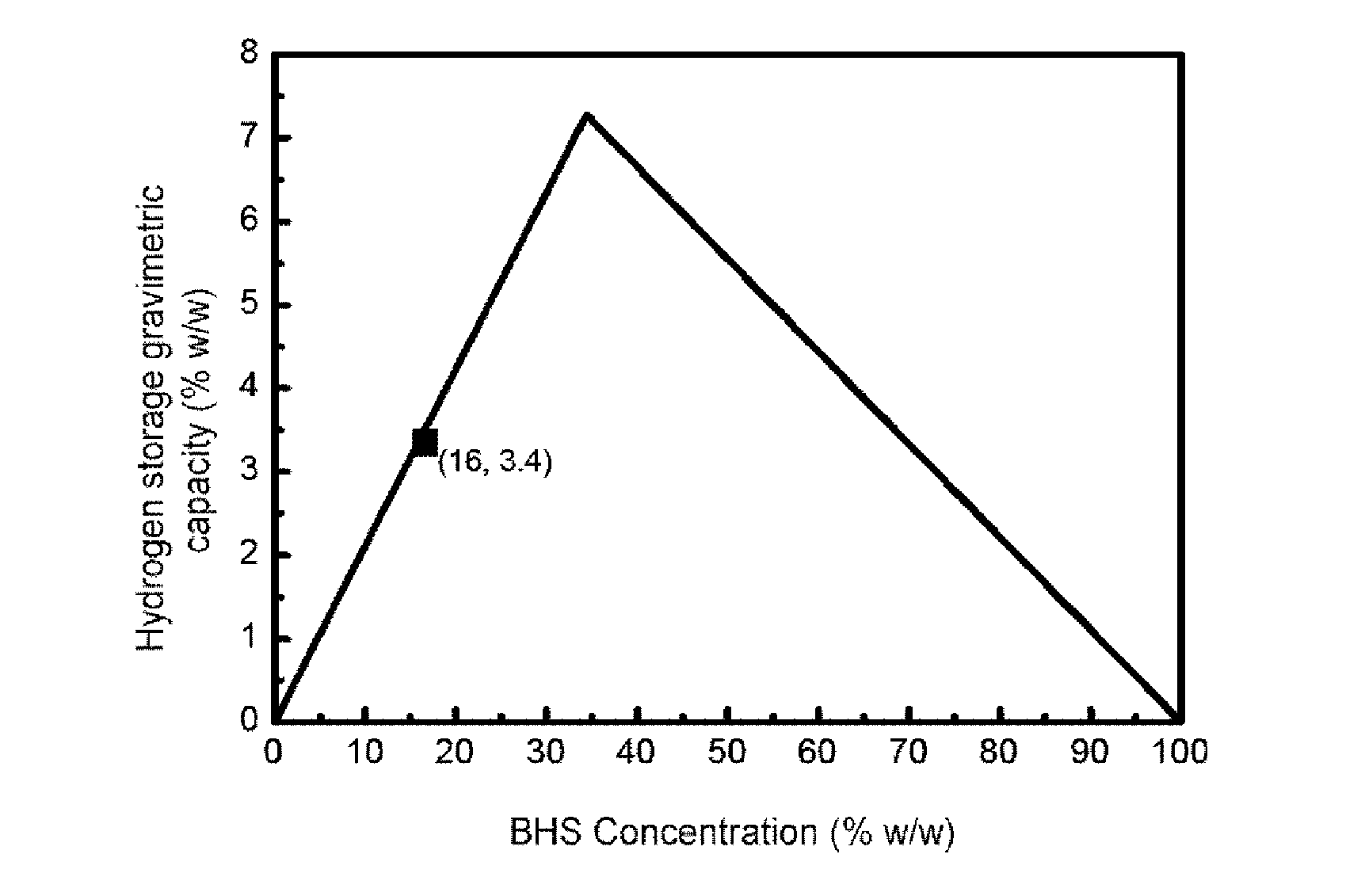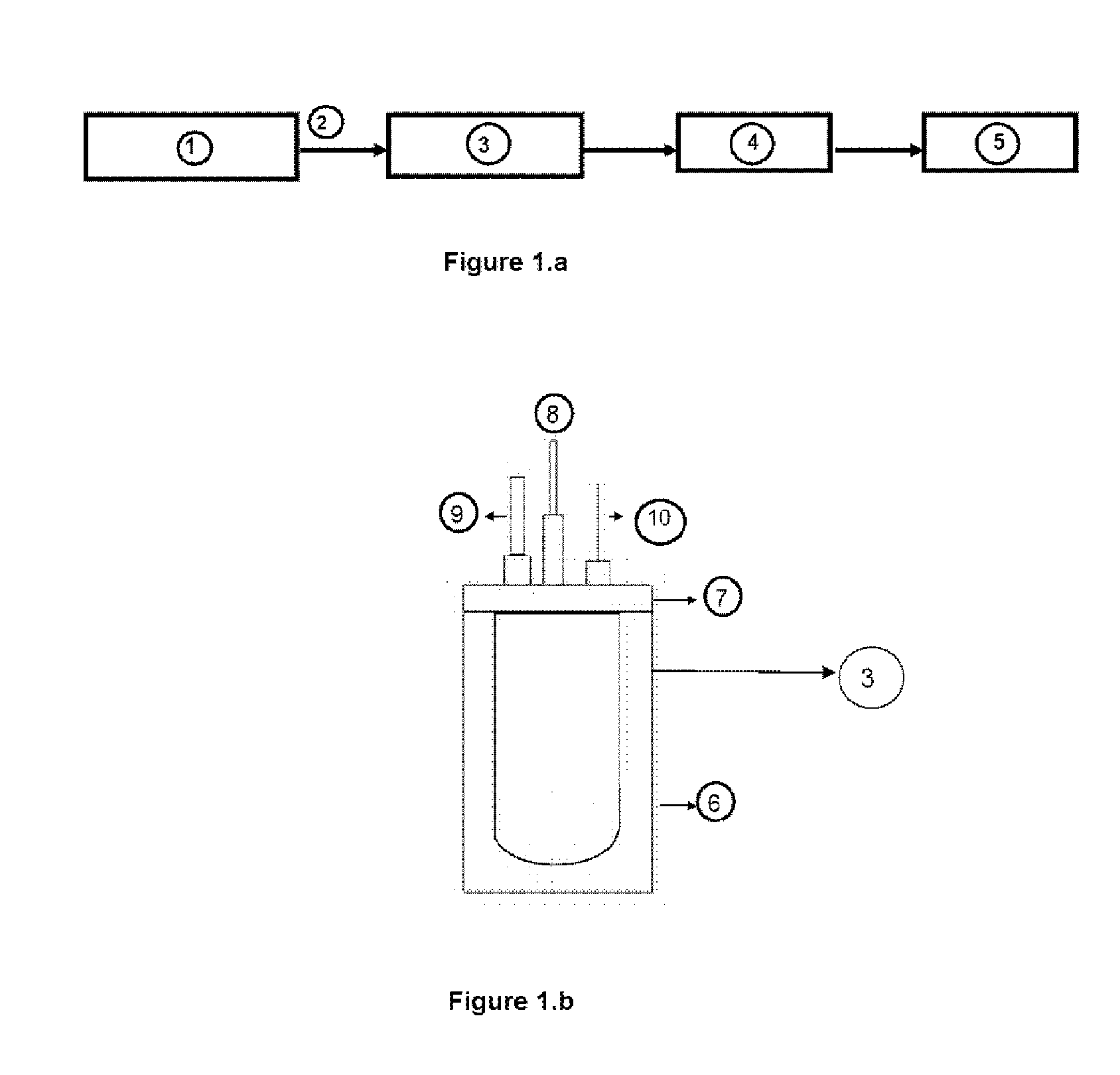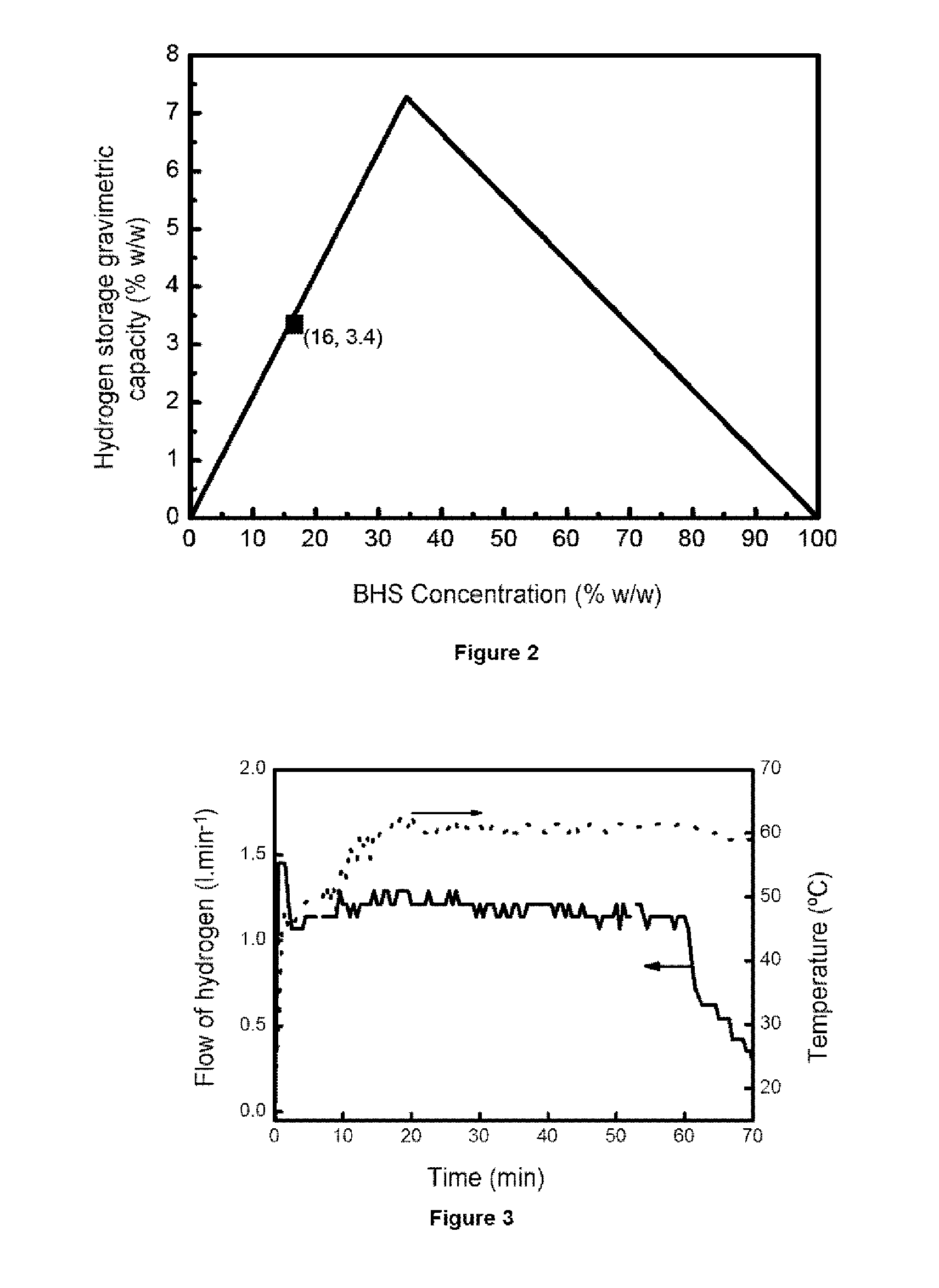Process for the production of hydrogen by catalyzed hydrolysis of a complex hydride, and facility with semi continuous reactor for carrying out the method
- Summary
- Abstract
- Description
- Claims
- Application Information
AI Technical Summary
Benefits of technology
Problems solved by technology
Method used
Image
Examples
examples of embodiment
OF THE INVENTION
Example 1
Preparation of a Cobalt Boride (CoB) Catalyst Supported on Nickel Foam
[0087]The supported CoB catalyst was prepared by reduction of CoCl2.6H2O in aqueous medium by NaBH4 stabilized in NaOH. The support chosen for the catalyst is nickel foam 1.6 mm thick, 95% porosity.
[0088]All solutions were prepared using MilliQ® purified water. Prior to synthesis, the support was cut into rectangles of 1 cm×2 cm and weighed. Then it was sonicated (i.e. subjected to the action of ultrasound) for 10 min in ethanol and 10 min in acetone for cleaning. Then it was immersed into 10% HCl for 10 min and washed with MilliQ® water. The support thus clean was immersed in a 30 wt % CoCl2.6H2O solution for 10 seconds and then for another 10 seconds in a BHS 20% solution in 1% NaOH cooled in an ice bath. Then the obtained product was washed several times. The cycle was repeated 12 times.
To increase the adhesion of the catalyst to the support without losing catalytic activity it was subj...
example 2
Process According to the Present Invention to Produce 1.16 Liters / Minute of Hydrogen for 1 Hour, Under Conditions to Feed a 60 W PEM-Type Fuel Cell During that Time, from the Hydrolysis of Sodium Borohydride in the Sodium Hydroxide Solution Over a Catalyst Such as the One from the Previous Example
[0089]To produce 1.16 liters / minute of hydrogen the BHS solution stabilized with a concentration of 19% w / w in it was selected. Said solution has associated a maximum gravimetric hydrogen storage capacity of 4%. To work in conditions of total conversion of BHS, an excess of CoB supported on nickel foam (675 mg catalyst) is added and to optimize the storage capacity of hydrogen a fuel addition rate of 2.5 ml / minute is selected (therefore dispensing an amount of BHS per minute such that in conditions of total conversion it would produce 1.3 liters / minute of hydrogen). Under these conditions a total conversion of the 90% BHS is achieved and a gravimetric storage capacity of hydrogen of 3.5%. T...
example 3
Process According to the Present Invention to Produce 0.6 Liters / Minute and 0.25 Liters / Minute of Hydrogen for 1 Hour, Under Conditions to Feed a 15 W and 36 W PEM-Type Fuel Cell Respectively During that Time
[0090]Experimental embodiments were also made under conditions to produce 0.6 liters / minute and 0.25 liters / minute of hydrogen for 1 hour. The selected conditions are shown in the table included in FIG. 4 compared to the conditions employed in Example 2. The results obtained of hydrogen production rate with optimization of BHS conversion and gravimetric storage capacity are also reflected in FIG. 4.
PUM
| Property | Measurement | Unit |
|---|---|---|
| Temperature | aaaaa | aaaaa |
| Temperature | aaaaa | aaaaa |
| Temperature | aaaaa | aaaaa |
Abstract
Description
Claims
Application Information
 Login to View More
Login to View More - R&D
- Intellectual Property
- Life Sciences
- Materials
- Tech Scout
- Unparalleled Data Quality
- Higher Quality Content
- 60% Fewer Hallucinations
Browse by: Latest US Patents, China's latest patents, Technical Efficacy Thesaurus, Application Domain, Technology Topic, Popular Technical Reports.
© 2025 PatSnap. All rights reserved.Legal|Privacy policy|Modern Slavery Act Transparency Statement|Sitemap|About US| Contact US: help@patsnap.com



